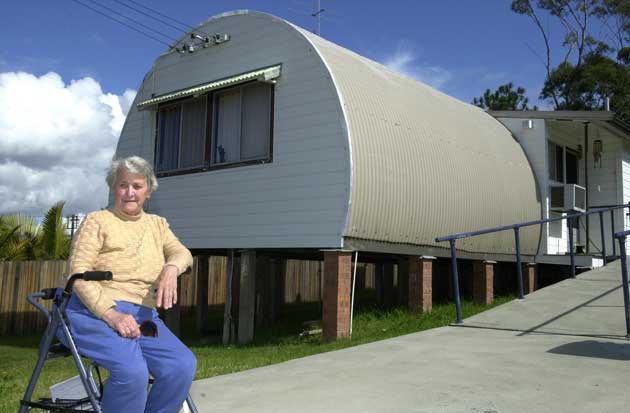Australians do battle over the prefab huts of Pommy Town
Debate raging over whether homes are eyesores or historical relics

It was known as Pommy Town, and the bushland-fringed housing estate seemed like paradise to the British migrants who settled there in the 1950s. Home might have been a prefabricated Nissen hut, but it had indoor plumbing, a large backyard and, in many cases, ocean views.
The huts, designed by a British Army engineer as portable accommodation, were only supposed to last a few years. Fifty were built at Belmont North, 90 miles north of Sydney, as affordable housing for the "Ten Pound Poms" who accepted Australia's post-war offer of a cheap passage to a new life. While 17 have been demolished, the rest of the semi-circular tin dwellings still stand, and an argument is raging about their future. Their owners want to knock them down and build more conventional homes. Conservationists want this slice of Australian history preserved.
This month, Lake Macquarie city council rejected a proposal to list the two-storey huts – the largest surviving cluster in Australia – as a conservation area of local significance. However, the New South Wales heritage body is still considering a separate application for them to be listed. Most locals oppose the idea. Charlie Leggatt, 84, a Scottish migrant who was one of the original residents, hopes to bequeath something of value to his children. He has been told his land is worth A$385,000 (£185,000 ) – but less than half that with a Nissen hut that cannot be demolished standing on it. And newcomers who have built modern structures in Pommy Town complain that the huts – situated in an area now regarded as prime real estate – are devaluing their properties.
Vicki Williamson, a local historian, believes they have little heritage value. "They were never meant to be permanent housing," she said. "They're freezing cold in winter and they're stinking hot in summer, and some of them are not even 12 inches off the ground. There's no breeze through them and they're always inundated with ants. So let's just document their history and move on."
But Helen Smith, who grew up in Belmont North, has happy childhood memories. Ms Smith, whose stepfather was a British migrant, said: "Our house was on a hill, with views of the sea, and we had a big backyard with vegetable gardens and chooks [chickens]." She still visits their next-door neighbour, 93-year-old Isobel Richardson, who has occupied her hut for almost 60 years.
The Historic Houses Trust, a conservation body, recently bought one hut and challenged architecture students at the University of Newcastle in New South Wales to redesign it as a contemporary family home. Renovation work is about to start, and the hut will eventually be sold – an example to other residents, the organisation hopes, of the creative potential of these humble structures. Richard Silink, manager of the trust's Endangered Houses Fund, said it supported efforts to have Pommy Town listed. "It's part of our post-war history, and we hope people will recognise that," he said.
The mayor of Lake Macquarie, Greg Piper, disagrees. "It's very nice for us to sit back and say 'Aren't they quaint? Aren't they interesting?' [But] they're not good living accommodation... Generally people aren't out there wanting to just rip them down, but they do want to upgrade them and move on."
The local council has rejected a recommendation by its own staff for the huts to be listed. Only two councillors supported the motion. The rest of the council sided with Kay Fraser, who believed the houses were "not significant at all", and that it was unfair to place restrictions on their owners.
Join our commenting forum
Join thought-provoking conversations, follow other Independent readers and see their replies
Comments
Bookmark popover
Removed from bookmarks